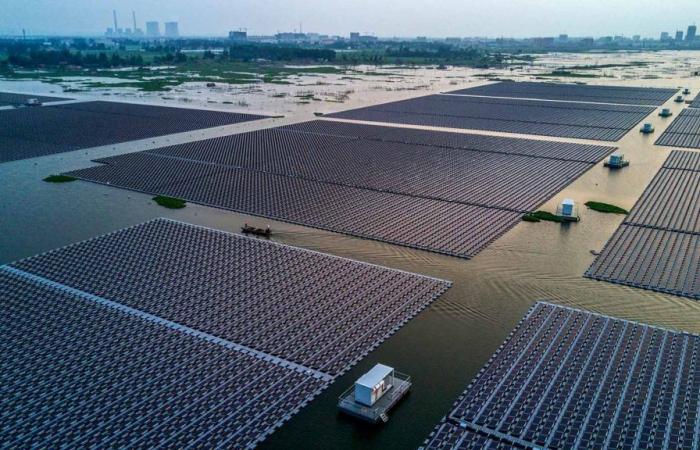One country that is proving that it is not wasting time on small things when it comes to renewable energy is China, which with its latest photovoltaic installations has become the largest producer of solar energy in the world. Now it is going for more. inaugurates another colossal work in the middle of the desert that could house the city of New York.
Where is the country’s new photovoltaic installation located?
Demonstrating its commitment to renewable energies and with the firm mission of achieving self-consumption, China is investing in the generation of free electricity through sunlight using its large desert expanses for the installation of large photovoltaic structures.
The last opening is the Midong project located in the desert of Urumqi, Xinjiang and becomes the largest solar plant on the planet that will work together with those located in Gobi and Tengger to supply a large part of the population of China.
With the addition of this new plant, China becomes not only the largest producer of solar energy due to its advanced technology, but also the largest generator of sustainable energy, including its wind projects.
In this way, it is expected that the country, until now the most polluting country in the world, will gradually begin to move away from the use of fossil fuels derived from coal and oil to self-sufficient in energy from the sun and the fluctuation of the winds.
Features of Midong project
The company China Green Development Group (CGDG) together with Power Construction Corp of China (PowerChina) were responsible for starting the operation of this 3.5 GW solar plant that occupies some 13,333 hectares.
The forecasts for this mega project estimate that it will generate an annual production of 600 MVequivalent to covering the entire electricity demand of Luxembourg. The Midong project has required an investment of 2.13 billion dollars.
The solar plant is made up of some 5.26 million 650W bifacial double-glass monocrystalline photovoltaic panels and is supported by 1.23 million pillars within an area of more than 800,000 square meters.
Additionally, the project includes 5 220 kV booster stations and about 208 km of transmission lines that connect electricity through a 750 kV substation. In turn, it will connect to the Gobi and Tengger photovoltaic oceans, using ultra-high voltage direct current (UHVDC) transmission lines
The sustainable power plant that occupies an area that could contain the city of New York forms a network of interconnected photovoltaic plants that will offer a total power of 6,090 million kV per year.
China’s goals with renewable energy
Estimated renewable energy production in China exceeds half of that produced by the whole of Europe or the United States. In fact, the International Energy Agency stated that During 2023, China generated the same electricity capacity as the global sum of 2022.
Authorities predict that by 2028, power plants in China will provide more than 60% of the world’s energy, and that by the end of the decade, half of electricity production will come from renewable sources.
All these projects join the aquatic plant located in Anhui province. The floating solar plant with a capacity of 150 MV provides electricity to more than 90,000 homes and demonstrates that renewable initiatives can be located in all spaces, even in water and the desert. Thus China makes its way towards total self-sufficiency in a few years.


